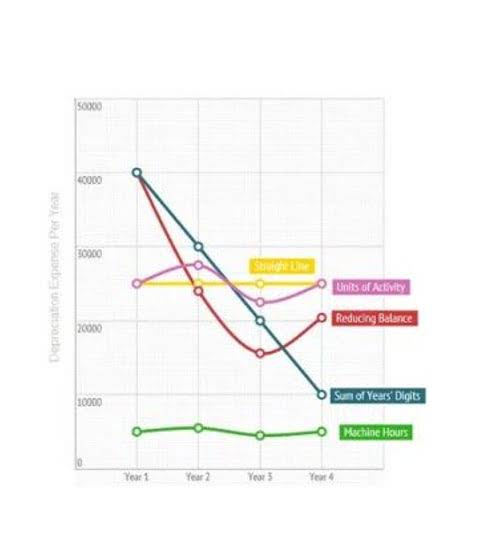
You also have a side hustle making custom party cakes that brings in an additional $20,000 per year. In 2022, your employer withholds Social Security taxes on $147,000 of your wages. Since you’ve already reached the Social Security wage base, you wouldn’t have to pay the 12.4% Social Security portion of self-employment taxes on your side hustle income. You’d only have to pay the 2.9% Medicare portion of self-employment tax. In addition to income taxes, you may be required to collect and pay sales tax, a state-mandated surcharge that varies from state to state.
What if I have both self-employment income and employment income?
Tax planning throughout the year can make filing taxes less of a headache. Avoid a surprise tax bill in April by reviewing business expenses throughout the year, looking out for tax deduction opportunities and keeping up with your quarterly estimated tax payments. With the freedom of being your own boss comes the responsibility of paying your own taxes. Unlike employees, who generally have their income tax and payroll taxes withheld through their wages, self-employed individuals generally must pay estimated taxes on a quarterly basis. Failure to pay the correct amount of estimated tax throughout the year can result in underpayment penalties and interest.
Made for every type of self-employed worker to seamlessly and accurately report their income.

Business owners should check with their state government to see if they must charge customers sales tax for their products or services. If you can carve out a little nook in your home that you can dedicate solely to your business affairs, you’re setting yourself up for a great home office tax deduction. It self employment tax does not have to be a separate room, as a desk in the corner of the kitchen will qualify. But it does have to be used exclusively for business tasks, so the kitchen table probably does not qualify. You’re allowed to deduct 50% of what you pay in self-employment tax as an income tax deduction on Form 1040.
We’ve pulled together some useful insights and tools to help you save at tax time and avoid any surprises
- It may be more beneficial to use the actual expense method if you’ve spent significant money on maintenance (oil changes, brake pad replacements, new tires), car inspections, and registration.
- As an employee, you may have noticed that your paycheck never matches your full salary.
- Eligible owners of sole proprietorships, partnerships, S corporations, and certain limited liability companies (LLCs) can deduct up to 20% of their QBI from their taxes.
- If you file a joint return with another self-employed person, you must calculate your self-employment taxes separately.
- Self-employment tax is similar to a payroll tax that is paid by self-employed individuals to fund Social Security and Medicare.
- Independent contractors and pass-through businesses are eligible for the deduction.
It is important to make these payments on time to avoid penalties. If your self-employment income is $400 or more during the year, you are required to pay self-employment taxes and file Schedule SE with your Form 1040, which is generally due by April 15. However, if you expect to owe $1,000 or more in combined income tax and self-employment taxes, you’ll need to make estimated quarterly tax payments. The self-employment tax rate is 15.3%, with 12.4% for Social Security and 2.9% for Medicare. However, the Social Security portion may only apply to a part of your business income.
IRS To Release Self-Employment Tax Regs – Law360
IRS To Release Self-Employment Tax Regs.
Posted: Tue, 07 May 2024 07:00:00 GMT [source]
TURBOTAX ONLINE/MOBILE PRICING:
There are various deductions and tax-savings opportunities for those who are self-employed. Self-employed individuals are entitled to a deduction of 50% of their self-employment tax on their individual income tax return. Self-employed individuals may also be able to deduct items such as health care premiums and certain qualified business expenses. To calculate your self-employment tax, start by finding your net earnings from self-employment. You can calculate your net earnings for tax purposes by subtracting your business expenses from business income.
Self-Employment Tax Filing

Qualified contributions to a SEP IRA are deductible on your individual income tax return and later taxable once you withdraw. If you drive for a ride-hailing app, work a side gig or otherwise own a small business, you may have to pay self-employment taxes. These are based on your net earnings, which is your income minus qualified business expenses. Enter your income from self-employment and your tax filing status into the calculator above to estimate your tax. With the regular method, your tax deduction is based on the percentage of your home that your office occupies. Then divide your office’s square footage by your home’s square footage and multiply the resulting percentage by the amount you spent on allowable house expenses to get a bigger deduction.
The same goes for payments made for health insurance premiums paid on the behalf of yourself, spouse or dependents. It’s actually one of the https://www.bookstime.com/articles/how-to-calculate-accrued-vacation-pay most common self-employment tax deductions. That rate is the sum of a 12.4% Social Security tax and a 2.9% Medicare tax on net earnings.
Which Method Is Better for My Business Vehicle: Standard Mileage or Actual Expense?
Or have a dedicated expert do your self-employment and investment taxes for you with TurboTax Live Full Service. Self-employment tax is an amount of money paid on self-employment net income to cover a person’s Medicare and Social Security tax. Then you would report one-half of your self-employment tax, $2,473, ($4,945 X .50) on Form 1040 as an adjustment to income, which reduces your Adjusted Gross Income and the amount of income tax you owe.
- Not paying the 15.3 percent tax on the $3,825 difference in this example saves you $585.
- All features, services, support, prices, offers, terms and conditions are subject to change without notice.
- Self-employment tax (or SE tax) is the Social Security and Medicare tax (health insurance) paid by self-employed individuals.
- There are other circumstances where you may have to pay self-employment taxes, so it’s important to speak with a tax professional or review the self-employment tax rules before filing your tax return.
- You can make catch-up contributions of $7,500 for a total of $30,500 if you’re age 50 or older.
